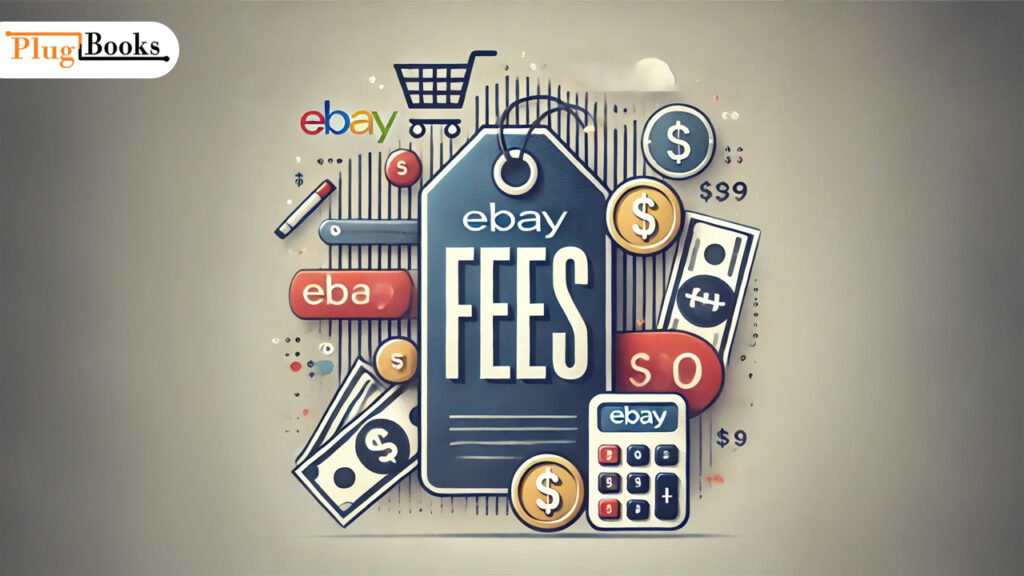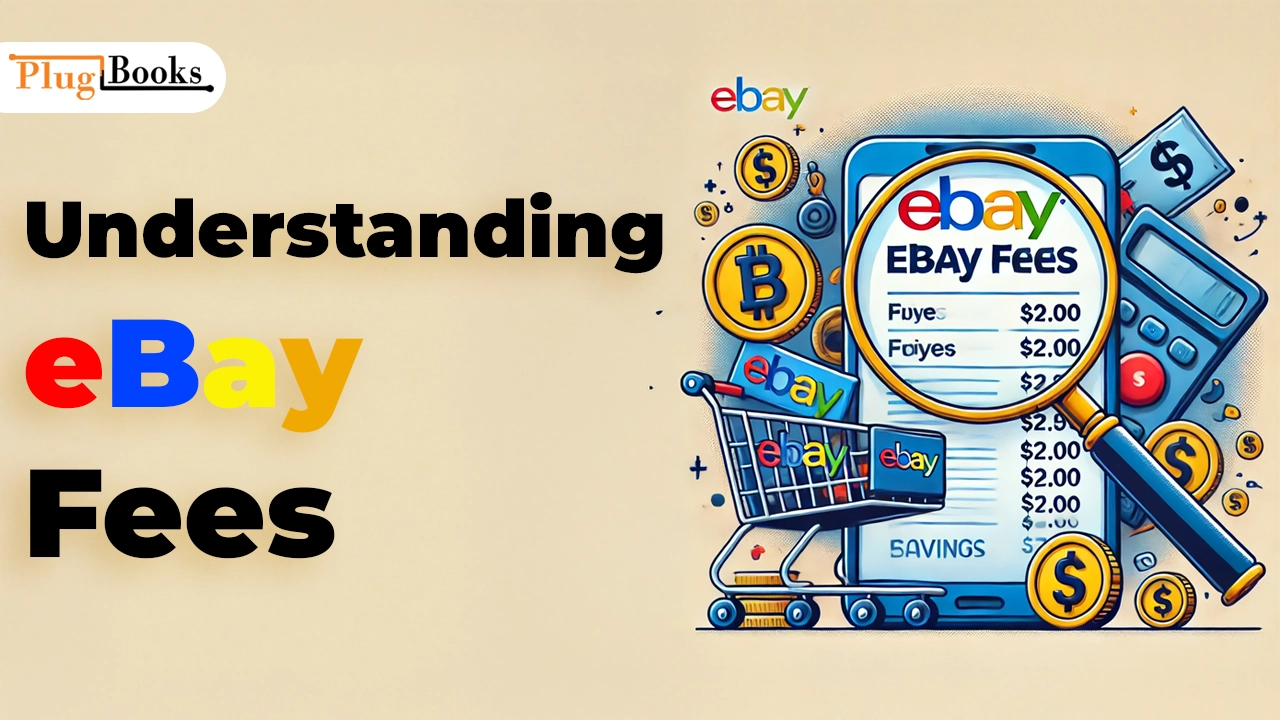Although selling on eBay is a great approach to attract millions of consumers worldwide, making sure your sales are profitable depends mostly on knowing eBay fees. Knowing your fees and where your income is going is crucial as an eBay seller. Many vendors battle with this and occasionally doubt the amount they are being paid and for what. You’re not alone, so relax. This tutorial will help you optimize your revenues by dissecting eBay fees in an understandable manner, therefore lowering your expenses.
What Are eBay Fees?
Charges paid by eBay fees to sellers for listing and selling their goods on the platform These charges pay for a range of eBay services including buyer protections, payment processing, and listing hosting. These fees primarily help to keep the platform running well, but sellers also need to know what they are paying for and how it affects their bottom line. What then are the eBay fees exactly, and how can you effectively handle them?
Types of eBay Fees
eBay levies several fees, each with a different intent. Reducing avoidable expenses and maintaining your revenues depend on an awareness of these several forms of eBay fees.
1. Insertion Fees
eBay could charge you an insertion fee when you build a listing. This is basically what “renting” space for your item on their marketplace costs. Usually modest, insertion costs might build up over time—especially if you have a large volume store or feature many things. The good news is that eBay lets most sellers have a set monthly free listing count. You pay a nominal insertion charge per item once you exceed that free listing limit.
Use your free listings sensibly. Before paying insertion costs for new listings, think about changing your listing if you are getting a lot of traffic but poor conversions.
2. Final Value Fees
For most eBay merchants, this is the most important charge. Comprising shipping costs, the final value fee is a percentage of the item’s entire selling price. Based on the kind of product, it falls between 12.9% and 15%. If you are selling a $100 item and the buyer pays $10 for shipping, eBay will take a percentage of $110—the whole sale price including shipping.
Always include shipping expenses in your pricing and consider eBay’s final value fee to help you avoid surprising yourself. Competitive shipping rates can also help to save general expenses.
3. Payment Processing Fees
Managed Payments from eBay charge sellers an extra 2.9% + $0.30 every transaction. This charge is deducted from the whole sales price including taxes and delivery. Although eBay’s payment mechanism streamlines purchases, you will have to budget for extra expenses.
Advice: When deciding on your product pricing, you should include payment processing costs. After this fee is subtracted, you might have to slightly change your price to guarantee you are still profitable.
4. Optional Listing Upgrades
eBay provides a number of extra enhancements to increase the appeal of your listings to possible customers. These cover elements like strong titles, extra images, subtitles, and top search result positioning. These tools cost extra even if they help your listings be more visible. Some sellers find that these upgrades increase sales, while others may feel that they’re not worth the extra investment.
Tip: Use listing upgrades selectively. If you have a high-value item that needs a little extra attention, investing in a premium placement might be worth it. Lower-priced products, however, are better off avoiding pointless listing enhancements.
5. Promoted Listings
An extra tool called Promoted Listings lets eBay charge an advertising fee based on a percentage of the final sale price of an item you highlight. eBay will show individual listings that you choose to highlight in search results and other highly visible areas. Although this function can boost awareness and speed sales of your products, it’s crucial to track its performance to guarantee a reasonable return on investment.
Advice: Track the performance of your promoted listings starting with a little ad budget. Should you discover that some listings provide good results with the advertisement, think about raising your budget for those products.
Calculate your exact fees using eBay Fees Calculator.
Does eBay Charge Selling Fee Based on Shipping?

Many times, sellers ask: Does eBay charge selling fee based on shipping? Indeed, eBay charges a selling fee covering the shipping expenses. The final value fee is computed from the whole sale price, which comprises the item’s cost as well as any delivery fees applied to the customer.
eBay will impose its final value fee on the whole $110, for example, if you sell an item for $100 and charge $10 for delivery. eBay fees will thus be bigger the more you charge for shipping.
One approach to lessen the effect of this charge is to provide free shipping. Although free delivery seems like a cost, it helps lower the overall fee percentage you pay since it eliminates additional charges on the shipment part of the sale.
Does eBay Charge a Selling Fee Based on Shipping Costs?
Indeed, eBay imposes fees depending on the whole selling price, including shipping. Pricing your products should take this into great account. Many vendors question if the final value fee computation includes the shipping cost. The truth is, eBay does charge a selling fee based on shipping—so if you’re offering free shipping, you should adjust your item price accordingly to cover this.
Tip: Keep in mind that buyers often favor listings with free shipping, and offering it might make your product more attractive, even if it means absorbing some of the shipping costs into your item price. In this case, does eBay charge a selling fee based on shipping? Yes, and that’s why offering free shipping might be the most cost-effective strategy in the long run.
How to Reduce eBay Fees
Paying eBay fees is part of doing business on eBay, but there are several smart ways to reduce your costs and maximize your profits.
- Take advantage of free listings: Verify your use of your free monthly listing allowance. Usually offering 50 free listings every month, eBay should be used sensibly.
- Price carefully: Incorporate into your price plan all eBay’s expenses. You can be underpricing your things and losing money if you are not including final value fees, payment processing fees, or insertion fees.
- Optimize your shipping: Consider offering free shipping to buyers. Not only can this make your listing more attractive, but it can also help you avoid paying extra fees on shipping costs. If you prefer to charge for shipping, make sure it’s a fair price and reflect that in your pricing.
- Use promotions sparingly: Only promote listings that you believe will benefit from the extra visibility. Investing in promoted listings can be effective, but it’s important to track the performance of each promotion to ensure it’s worth the cost.
- Review your sales regularly: Keeping track of your sales and fees will help you spot areas for improvement. Review your listings and pricing often to be sure you’re not overpaying for pointless fees.
Final Thoughts
Anyone who intends to sell on eBay has to understand eBay fees. Learning how to control these expenses and cut extraneous charges will help you flourish as an eBay vendor and boost your profitability. Whether you run a full-scale eBay company or sell part-time, knowing eBay costs will enable you to keep competitive, make wise decisions, and eventually increase your sales.
Knowing the several eBay costs now helps you create a pricing plan fit for you. If you’re still asking, does eBay charge selling fee based on shipping? —now you know that the answer is yes. By factoring this into your pricing and making smart choices about listings and promotions, you’ll be on your way to making the most of your eBay business.
Important Notes:
- Insertion fees, final value fees, payment processing costs, listing enhancements, and promoted listings make up eBay fees.
- Does eBay charge selling fee based on shipping? Indeed, the final value fee is determined by the whole transaction price including shipping.
- To cut costs, maximize your delivery, advertise carefully, and make good use of your free listings.
How PlugBooks Helps eBay Sellers
PlugBooks is a powerful bookkeeping solution designed to streamline the financial management of eBay sellers. It helps automate the tracking of sales, expenses, and fees, making it easier to stay on top of your profits and losses. With PlugBooks, eBay sellers can quickly generate accurate reports, simplify tax filing, and get insights into their business performance. By integrating with eBay and other platforms, PlugBooks helps sellers save time and focus on growing their business without the hassle of manual bookkeeping. For more information, visit PlugBooks.





13 thoughts on “Understanding eBay Fees: A Simple Guide to Save Money”